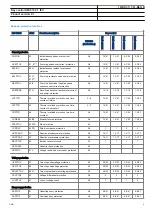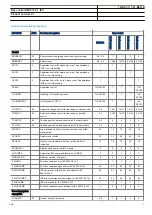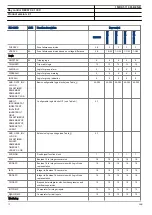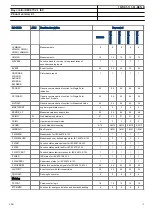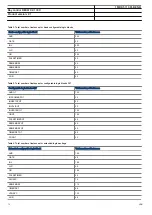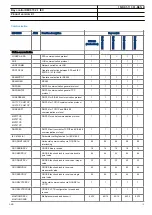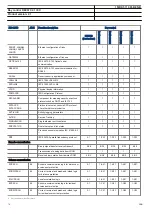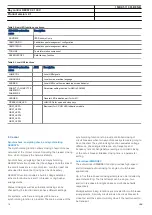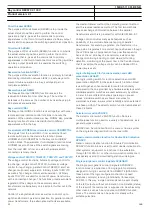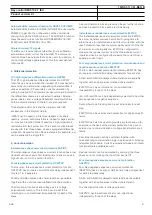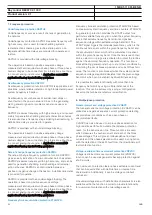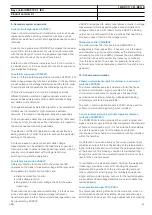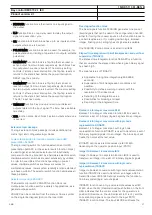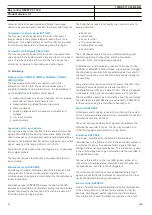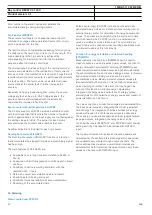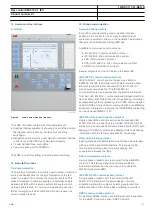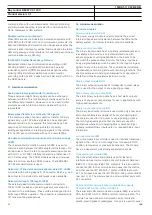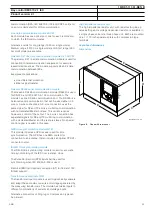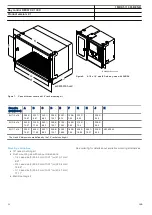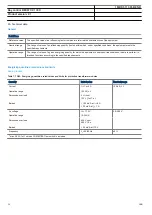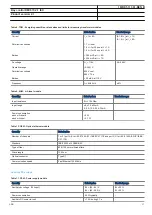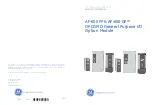
NS4PTOC can be used as main protection for unsymmetrical
fault; phase-phase short circuits, phase-phase-earth short
circuits and single phase earth faults.
NS4PTOC can also be used to provide a system backup for
example, in the case of the primary protection being out of
service due to communication or voltage transformer circuit
failure.
Directional operation can be combined together with
corresponding communication logic in permissive or blocking
teleprotection scheme. The same logic as for directional zero
sequence current can be used. Current reversal and weak-
end infeed functionality are available.
Sensitive directional residual overcurrent and power
protection SDEPSDE
SEMOD171438-5 v5
In isolated networks or in networks with high impedance
earthing, the earth fault current is significantly smaller than
the short circuit currents. In addition to this, the magnitude of
the fault current is almost independent on the fault location in
the network. The protection can be selected to use either the
residual current or residual power component 3U0·3I0·cos
j
,
for operating quantity with maintained short circuit capacity.
There is also available one nondirectional 3I0 step and one
3U0 overvoltage tripping step.
No specific sensitive current input is needed. SDEPSDE can
be set as low 0.25% of IBase.
Thermal overload protection, one time constant LCPTTR/
LFPTTR
M12020-4 v13
The increasing utilization of the power system closer to the
thermal limits has generated a need of a thermal overload
protection for power lines.
A thermal overload will often not be detected by other
protection functions and the introduction of the thermal
overload protection can allow the protected circuit to operate
closer to the thermal limits.
The three-phase current measuring protection has an I
2
t
characteristic with settable time constant and a thermal
memory. The temperature is displayed in either Celsius or
Fahrenheit, depending on whether the function used is
LCPTTR (Celsius) or LFPTTR (Fahrenheit).
An alarm level gives early warning to allow operators to take
action well before the line is tripped.
Estimated time to trip before operation, and estimated time to
reclose after operation are presented.
Thermal overload protection, two time constant TRPTTR
M13243-3 v10
If a power transformer reaches very high temperatures the
equipment might be damaged. The insulation within the
transformer will experience forced ageing. As a consequence
of this the risk of internal phase-to-phase or phase-to-earth
faults will increase.
The thermal overload protection estimates the internal heat
content of the transformer (temperature) continuously. This
estimation is made by using a thermal model of the
transformer with two time constants, which is based on
current measurement.
Two warning levels are available. This enables actions in the
power system to be done before dangerous temperatures are
reached. If the temperature continues to increase to the trip
value, the protection initiates a trip of the protected
transformer.
The estimated time to trip before operation is presented.
Breaker failure protection CCRBRF
M11550-6 v16
Breaker failure protection (CCRBRF) ensures a fast backup
tripping of the surrounding breakers in case the own breaker
fails to open. CCRBRF can be current-based, contact-based
or an adaptive combination of these two conditions.
A current check with extremely short reset time is used as
check criterion to achieve high security against inadvertent
operation.
Contact check criteria can be used where the fault current
through the breaker is small.
CCRBRF can be single- or three-phase initiated to allow use
with single phase tripping applications. For the three-phase
version of CCRBRF the current criteria can be set to operate
only if two out of four for example, two phases or one phase
plus the residual current start. This gives a higher security to
the back-up trip command.
CCRBRF function can be programmed to give a single- or
three-phase re-trip of its own breaker to avoid unnecessary
tripping of surrounding breakers at an incorrect initiation due
to mistakes during testing.
Stub protection STBPTOC
M12902-3 v9
When a power line is taken out of service for maintenance
and the line disconnector is opened in multi-breaker
arrangements the voltage transformers will mostly be outside
on the disconnected part. The primary line distance
protection will thus not be able to operate and must be
blocked.
The stub protection STBPTOC covers the zone between the
current transformers and the open disconnector. The three-
phase instantaneous overcurrent function is released from a
normally open, NO (b) auxiliary contact on the line
disconnector.
Pole discordance protection CCPDSC
M13269-3 v14
An open phase can cause negative and zero sequence
currents which cause thermal stress on rotating machines
and can cause unwanted operation of zero sequence or
negative sequence current functions.
1MRK 511 361-BEN B
Bay control REC670 2.1 IEC
Product version: 2.1
22
ABB


